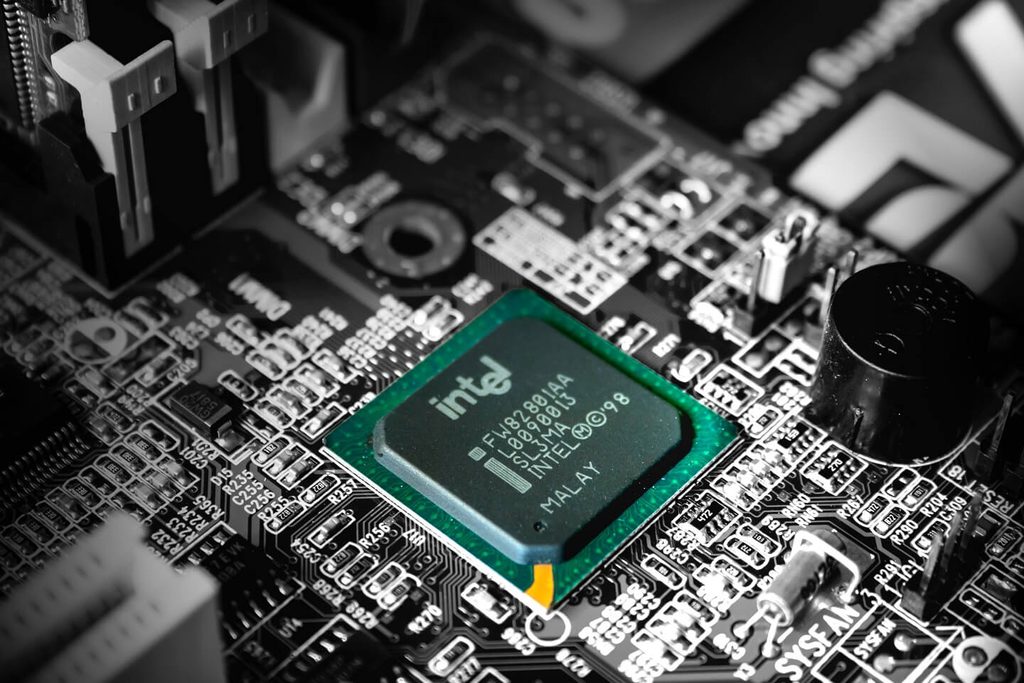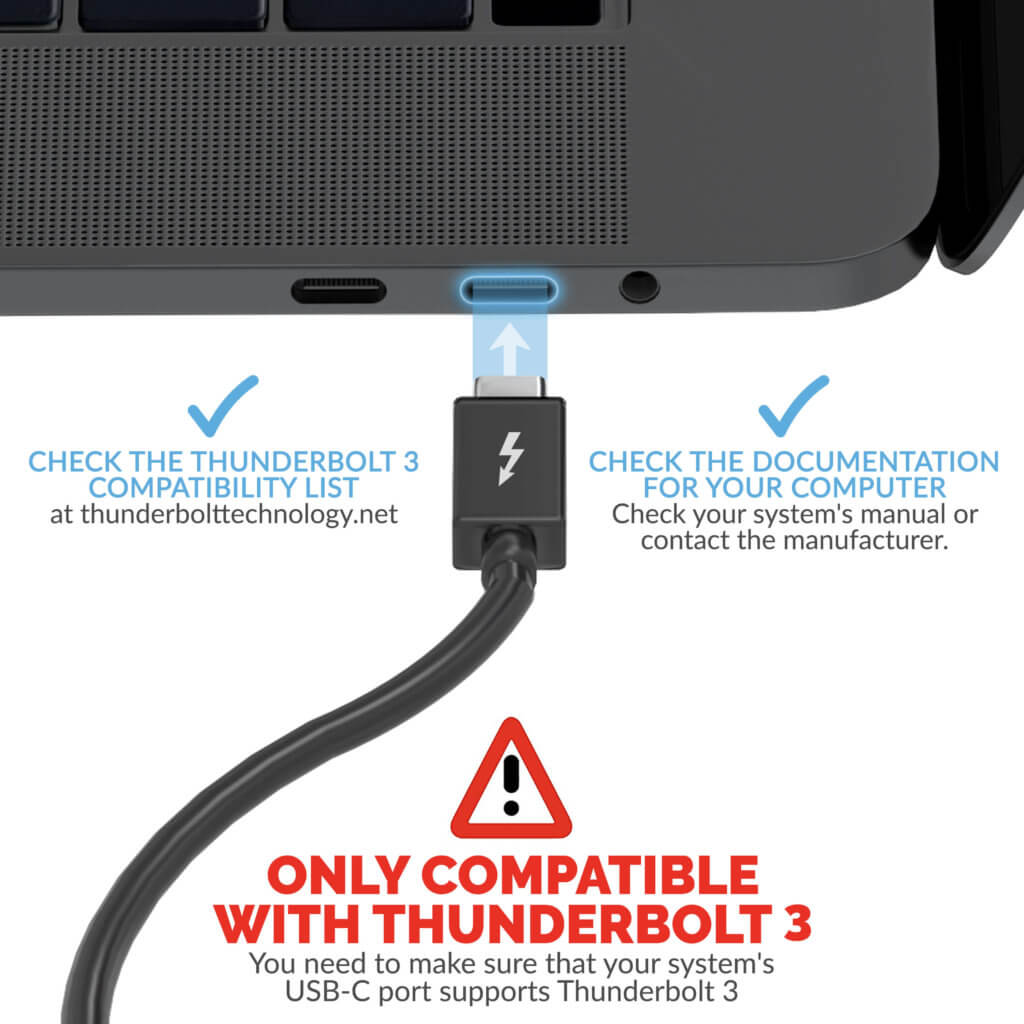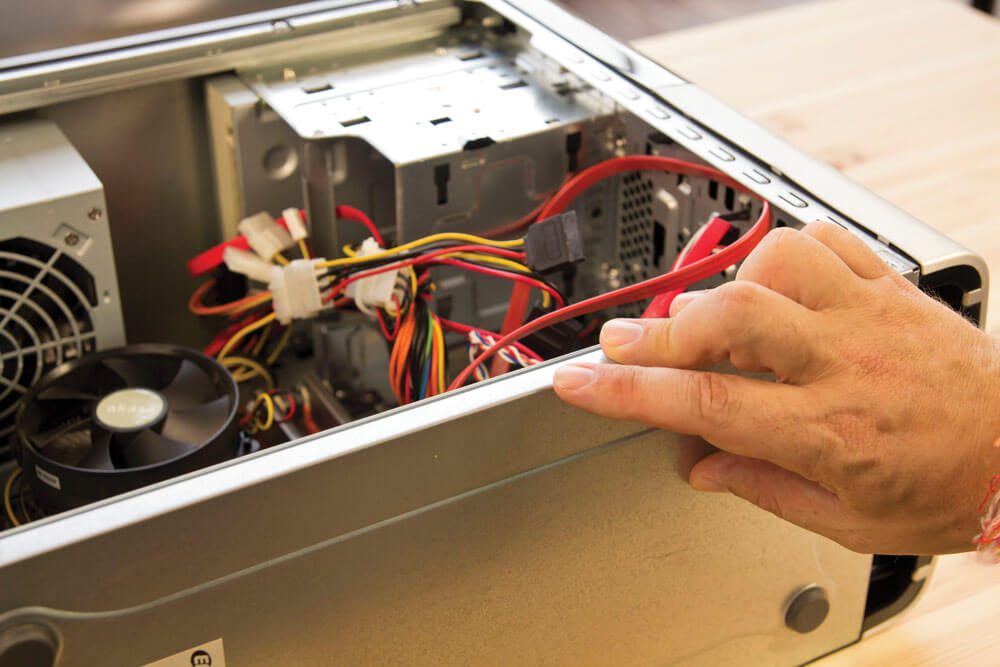A computer processor is a chip that carries out calculations. Processors receive input data, process said data and create output data. Behind every task your computer does is the processor; due to this, many people call the processor the brain of the computer.
AMD recently released its third-generation desktop processor. They also released a gaming central processor (CPU) for an affordable $500. All of AMD’s new processors should start shipping July 7, 2019.
Intel, an AMD competitor, responded with their Ice Lake 10nm processors. These processors will also be utilized in two-in-one systems, smartphones and laptops.
AMD Processors and Chips
Ryzen is the third generation of AMD processor that’s based on Zen 2 architecture. Although it sounds like a name mixup, the third version of the CPU really is powered by Zen 2. With the updated Zen, AMD is set up to be one of the top companies in the desktop computing world in 2019. The new processors will improve efficiency, speed and core counts.
According to AMD, Zen 2 is 15 percent faster in single-thread workloads than its previous model. In multi-core workloads, speed improves by 18 to 20 percent.
The first option available for AMD’s new processors is the $199 Ryzen 5 3600x. This processor uses only 65 watts of power and has six cores and 12 threads. When first released, processors had one core only. As technology improved, CPUs gained more cores to improve performance. Many computer processors are now multi-core systems.
Additionally, the 3600x unit runs at a 3.6GHz base. To understand what this metric means, consider the following: the faster a processor runs, the more power it uses and the more heat it creates. As a general rule, you want your processor to run at a lower speed. The 3.6GHz base of the unit allows you to save on your power bill and generated heat when you can while still being able to carry out more advanced tasks that require a 3.6GHz processor to run. The unit also has 4.2GHz boost, which is used to increase its performance temporarily when needed.
The next option is the Ryzen 5 3600x that also has six cores and 12 threads. However, this option comes with a 3.8GHz base and 4.4GHz boost.
If you currently have the 2700x, a 105-watt chip that has eight cores, 16 threads, 3.6GHz base and 4.3GHz boost, you might want to consider the Ryzen 7 3700x. Both processors have the same number of cores and threads.
However, the Ryzen 3700 uses 30 less watts of power. The base speed of the 3700 is slightly reduced to 3.6GHz and the boost speed is increased to 4.4GHz. If you need more computing power, there is also a Ryzen 3900x. If you are having any kind of difficulty figuring out what AMD processor you need, strongly consider reaching out to HelpCloud Technicians for remote support.
What makes the Ryzen so popular is that it costs less, its watts consumption is decreased and the unit operates at an impressive speed. If you want to upgrade your PC, you’ll likely be very pleased with the new AMD processors.
All of AMD’s new chips are compatible with PCI Express 4.0, which connects the graphic card to the rest of the system. PCI 3.0 is still very fast, but 4.0 doubles the previous iteration’s speeds. This improvement will should lead to better storage and more room to play around with pixels. With a new architecture called RDNA, the design is supposed to be nearly twice as fast as its predecessors.
Ice Lake 10nm Processors
A high-level overview of the Intel 10th generation core processors has recently been made available. The core count will increase up to four and the threads up to eight. The max frequency will be 4.1GHz. Aside from the CPU’s changes, Intel has a lot to offer.
For example, the old Thunderbolt 3 had a larger power consumption and cost. With the new Ice Lake, there are up to four Thunderbolt 3 ports designed into the CPU, which saves power and improves implementation flexibility. The Thunderbolt ports can also now power 5K 60Hz displays.
Integrated WIFI 6 is another big update for Intel. WIFI 6 is the new generation of WIFI. It’s faster than WIFI 5 and runs at 9.6 Gbps. This WIFI upgrade also cuts down on latency, especially when many devices or high-level computing are on a network at any given time.
Every 10nm Ice Lake Processor comes with WIFI 6. Artificial intelligence (AI) workload will also significantly improve with the new processor, such as noise reduction, reducing background noise, image retouching and more.
For now, Ice Lake will replace Whiskey Lake and Coffee Lake Refresh products. Overall, Ice Lake’s architectural shift is the largest Intel has seen over the last half decade.
CPUs In 2019
There’s an observation that states that every two years, the speed and capability of computers generally doubles; this is called Moore’s law. However, during the last 15 years of computer development, Moore’s law hasn’t always held true.
One way computer developers have continued to advance the field when it would otherwise be stagnant is by adding more cores onto a single processor. Doing so increases efficiency, but it also has several drawbacks.
Only a physically significant chip can accommodate more cores. When the size of a chip is increased, manufacturing errors go up, the chip has a more difficult time cooling and costs rise.
To overcome these drawbacks, AMD and Intel have proposed several solutions. Although their approaches differ slightly, they both revolve around the same idea: breaking up a CPU into several connected chips, called chiplets.
Many modern CPUs are formed on a continuous piece of silicon. If any of the parts on the silicon are defective, the entire chip is likely to be obsolete. Intel and AMD want to manufacture various parts of their CPUs separately and then put them together in assembly.
By splitting a large CPU into smaller parts, it’s easier to fix one part of a bad chip. Currently, if anything goes wrong, the whole chip must be replaced.
When (and How) to Upgrade
In general, the “If it isn’t broken, don’t fix it” thought process applies to CPU upgrades. Changing a CPU requires serious computer knowledge and can cause negative consequences if not done properly. Before updating a CPU, see if you can improve your random access memory or video card.
If you must change your CPU, you should do so carefully. To start, you need to understand what processor you have and which ones can replace it within your computer. You will then access your computer’s motherboard model. Locate the type of processor socket your motherboard uses while reviewing the motherboard’s model.
Again, make sure your desired processor is compatible.
When your desired processor doesn’t match your motherboard, you can consider a new motherboard. Generally, though, it’s easiest to stay with your current motherboard. After you’ve purchased the new processor, it can be installed. Before you do anything, make sure your computer is turned off and unplugged from power.
Find a clean, hard surface where you can work. It may seem silly, but take off your shoes and socks and stand on hard floor in bare feet when working. If you do this, you will ground yourself and prevent static build up from transferring to your computer component. When electrostatic transfers to a computer, it can destroy its components.
You may also ground yourself by continually touching an unpainted metal piece of your computer’s case. If continual connection is not possible, you can touch grounded metal objects every few minutes. In the event you have access to an anti-static wristband or ESD mat, you may also use these to ground yourself. Another option is to use a wire to connect yourself to a grounded metal object.
Place your computer on its side so you can access the side panel. While you’re grounded, carefully remove the side panel. Look inside the computer for the motherboard; this area can be pressed against one of the sides of the computer. Find the heat sink and remove it carefully. Look at how your current processor is positioned.
To make sure you insert the next one correctly, study the current configuration. After you remove the current processor, install the new one. After, reinstall the heat sink, make sure everything is connected properly and reassemble the computer. You should then be able to boot your device on and navigate through setup menus to start using your new processor.
Paradox of Choice
Too many choices can cause low satisfaction and even paralysis. Luckily, when it comes to choosing between AMD and Intel processors, the decision is simple. Both options have many advantages that will help your computer.
In order to learn more about the drawbacks of these two processors and which one is better for you and your family, reach out to HelpCloud directly.



